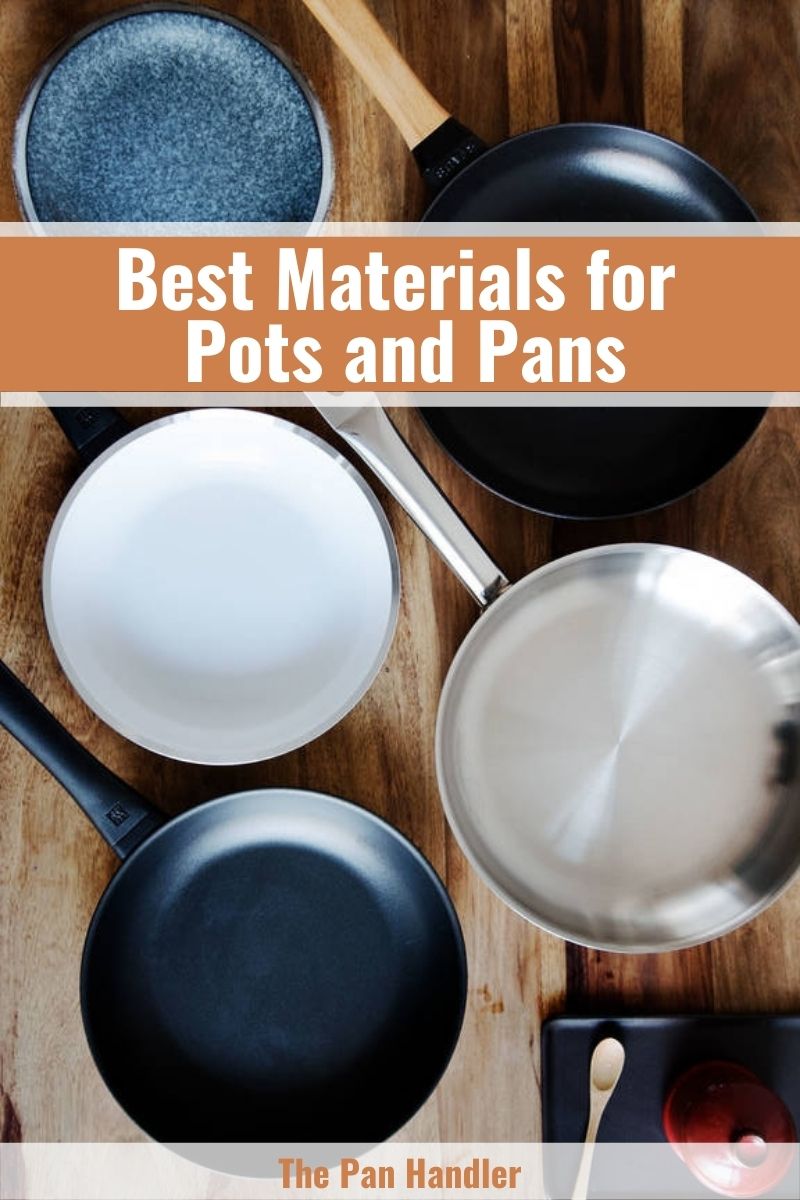Not all cookware is created equal. There is a variety of pan materials in the market each with their own advantages and disadvantages. These pan materials are for different types of cooking, and having the knowledge will help you pick the right one for your cooking session.
What is the best material for a frying pan?
With so many frying pan materials available, choosing the right one can be quite a challenge. There is really no right or wrong answer as to which is the best among the options of pan materials.
It all boils down to your purpose and preference — which you can decide easier when you know the qualities, pros, and cons of each pan material. Continue reading as we will share all you need to know to get familiar with the different pan materials.
Qualities to look for in cookware
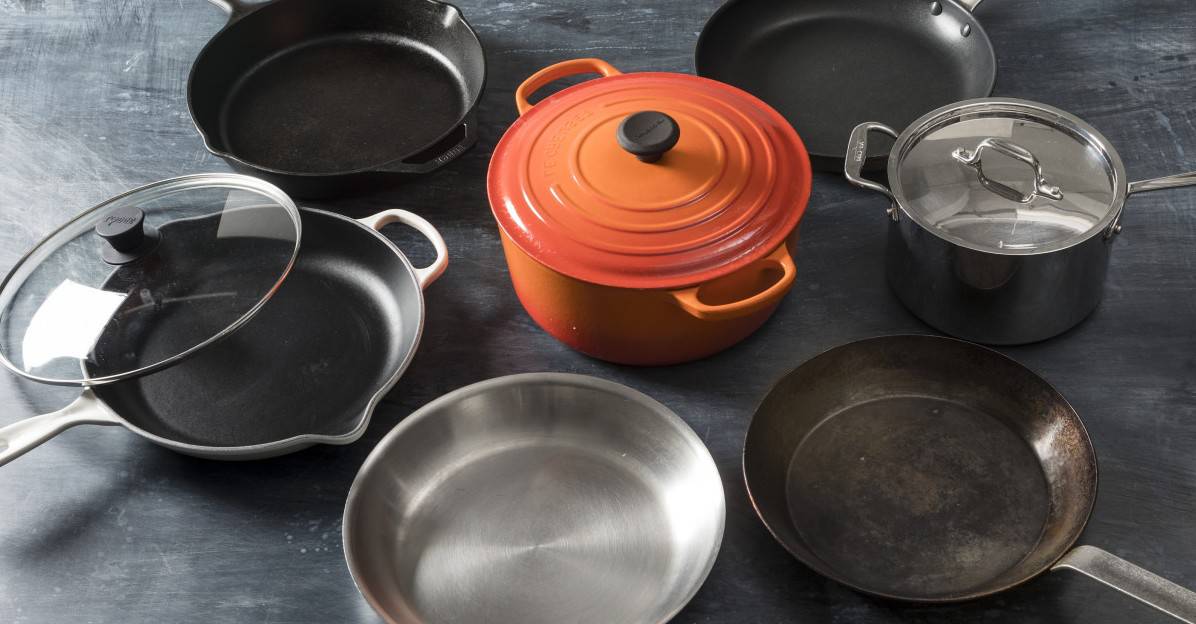
In addition to considering your budget and the availability of different cookware options, you also need to evaluate various qualities when selecting your pan material. These qualities differ from one pan material to another and they each have significance in the cooking process.
Heat distribution
When looking at cookware, one quality that should be top of mind is heat distribution. This simply refers to how well your pan material can distribute heat.
Why is this important? A pan with good heat distribution will cook food evenly, thus, better cooking results.
Conversely, when your pan has poor heat distribution, it has many hot spots because the heat at the bottom of your pan is not evenly distributed. Some areas will be hotter than others, resulting in unevenly cooked food.
Induction compatibility
More and more people are turning to induction stoves in cooking. This is because induction cooking is relatively more efficient when it comes to energy, thus saving you a few bucks compared to when you use gas.
The thing about induction cookers, though, is that not all pans can be used with them. If you have an induction stove at home, better check if the pan you are getting is induction compatible.
As a rule of thumb, pan materials such as stainless steel and with iron are good matches for induction cooking.
Acid reactivity
How your pans react to acid is one thing you should also look out for. Some pan materials react to acidic food such as aluminum, iron, copper, and non-stainless steel.
When you add ingredients such as vinegar, tomatoes, and lemon juice, these pan materials that are reactive to acid will release metal atoms into your food. This can result in food discoloration or a noticeable taste. You don’t want to ruin your recipe so avoid pan materials like this.
That being said, it is better to get a pan that is not reactive to acid to avoid cooking problems. Pan materials like glass, ceramic, and stainless steel are good examples of non-reactive cookware.
Now that you have an idea of the qualities to consider in cookware, let’s discuss the different pan materials and their advantages and disadvantages.
Cast iron
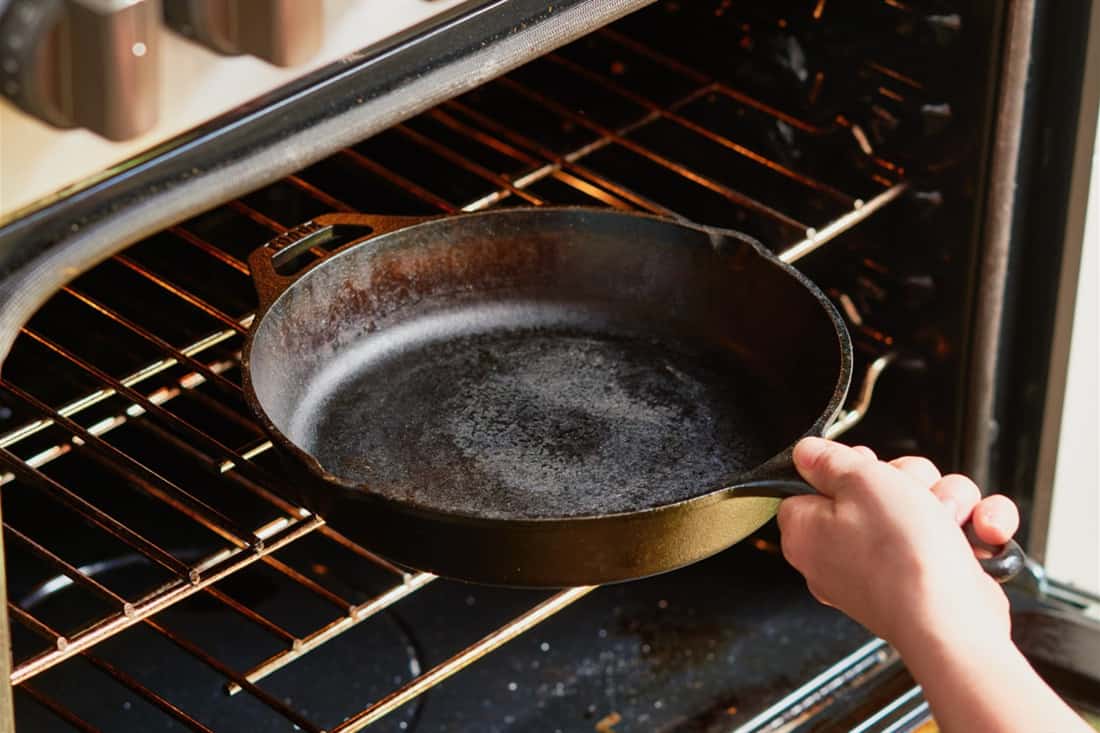
One pan material that households use is cast iron. The greatness of cast iron pans in cooking has stood the test of time — literally, as this pan material can last a very long time. With proper care, you can even pass this on to the next generation.
- Advantages
Cast iron pans are great buys as they are easy on the pocket and heavy-duty. Expect evenly cooked food when you use this pan material as it has good heat distribution and heat retention. This makes it great for searing, preparing skillet dishes, and more.
This pan material is also quite versatile as you can use it with a stovetop, oven, or even in your outdoor campfires. It can withstand very high temperatures but may take time to heat up, too.
Perhaps the reason why many people love cast iron is that it is sure to last for a long time. You won’t have to worry about it chipping, denting, or melting.
- Disadvantages
One disadvantage of this pan material is its weight. As it is made of heavy-duty material, you will find cast iron pans quite heavy versus other pan materials. There are lightweight options, though, that are now available in the market.
Also, cast iron can be reactive to acidic food so you need to consider when you cook using this pan material.
Cast irons are also known for being high maintenance. They last long but you have to give them the proper care they need. That means having to clean it the soonest it cools down. Further, don’t throw this pan material into the dishwasher. You have to wash it by hand after cooking, which requires more effort and time.
Because of its iron component, cast iron pans may rust if not maintained well. You need to season it from time to time. Here is a video to guide you in seasoning cast iron pan material.
Enameled cast iron
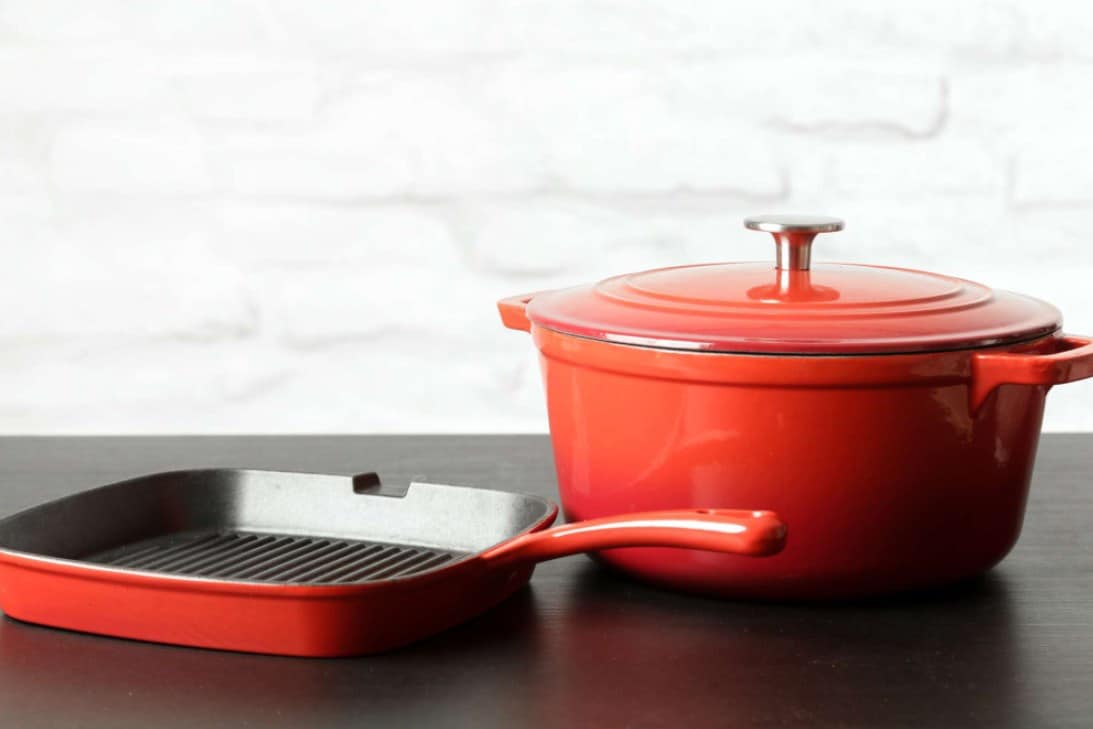
A variety of the cast iron pan material, the enameled cast iron stays true to its name. It is a cast iron pan with a coating of porcelain which makes it much easier to care for compared to the original cast iron pan.
- Advantages
Many use enameled cast iron pans as they have the good qualities of the trusted cast iron and are much easier to maintain. Just like cast iron, the enameled cast iron has great heat distribution. Because it is durable and versatile, you can use this either with your stovetop or oven.
Aside from making it easier to clean up, the coating of enameled cast iron pans makes it non-reactive to acidic ingredients. You won’t have to stress about food discoloration or bad taste.
- Disadvantages
The downside of getting an enameled cast iron is that it is quite costly. Price-wise, it is much more expensive than the usual cast iron. However, it is definitely worth splurging on.
Like the cast iron, this pan material is also heavy which would require you more energy and effort when cooking.
Non-stick
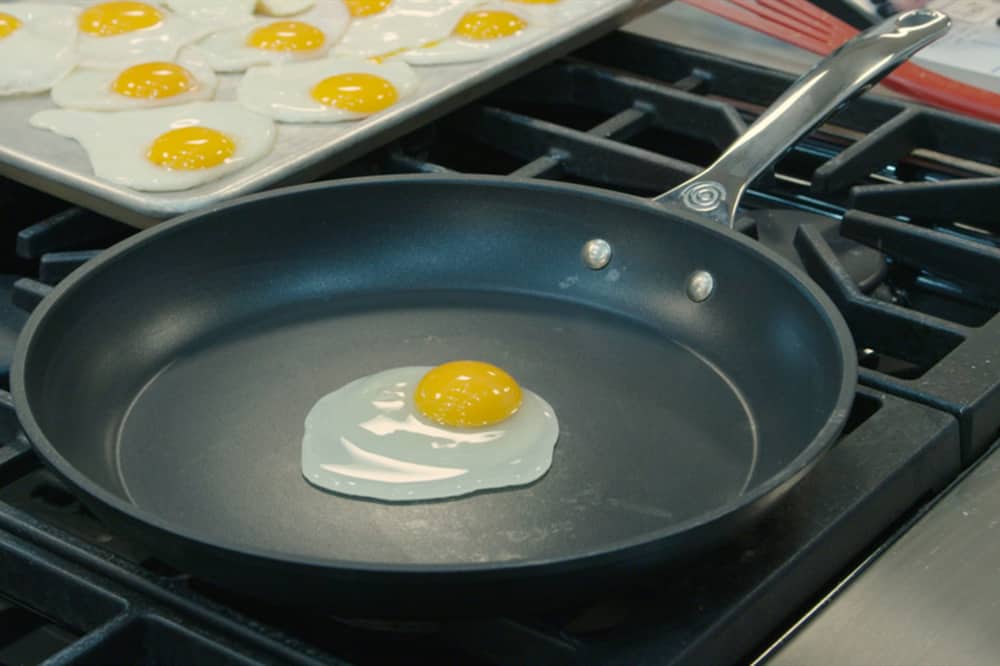
You have most probably come across non-stick cookware. One of the very common pan materials in the market, non-stick is a go-to for many. Non-stick is not a pan material per se as it can be made of other materials such as aluminum, copper, and stainless steel. It is considered a pan material because of its non-stick coating which gives it its name.
- Advantages
Non-stick has earned quite a reputation because of its, as its name suggests, non-stick properties. The greatest advantage of using non-stick pans is that food does not stick to it and instead just slides off easily. This comes pretty usefully when you are cooking food that sticks and breaks down easily such as eggs and fish.
Non-stick pans are also easy to clean and require minimum effort. They are easy on the pockets and you won’t have to break the bank to add one to your kitchen.
In terms of heat conduction, non-stick pans can adapt to changes in cooking temperature especially if you get the ones made with anodized aluminum.
- Disadvantages
Through the years, people have raised concerns over how safe non-stick pans are. When the coating, usually made of Teflon, gets chipped off, the pan releases toxic chemicals especially when overheated. There are other options, though, that are more eco-friendly and considered safer.
Non-stick pans cannot withstand high temperatures so you have to settle with low to medium heat.
Aside from that, non-stick pans do not last long because of the coating. To avoid chipping and to keep its non-stick properties, avoid using metal utensils when cooking and opt for wooden ones instead. Also, non-stick pans should be washed by hand.
Here are some tips for taking care of your non-stick pans:
Stainless steel
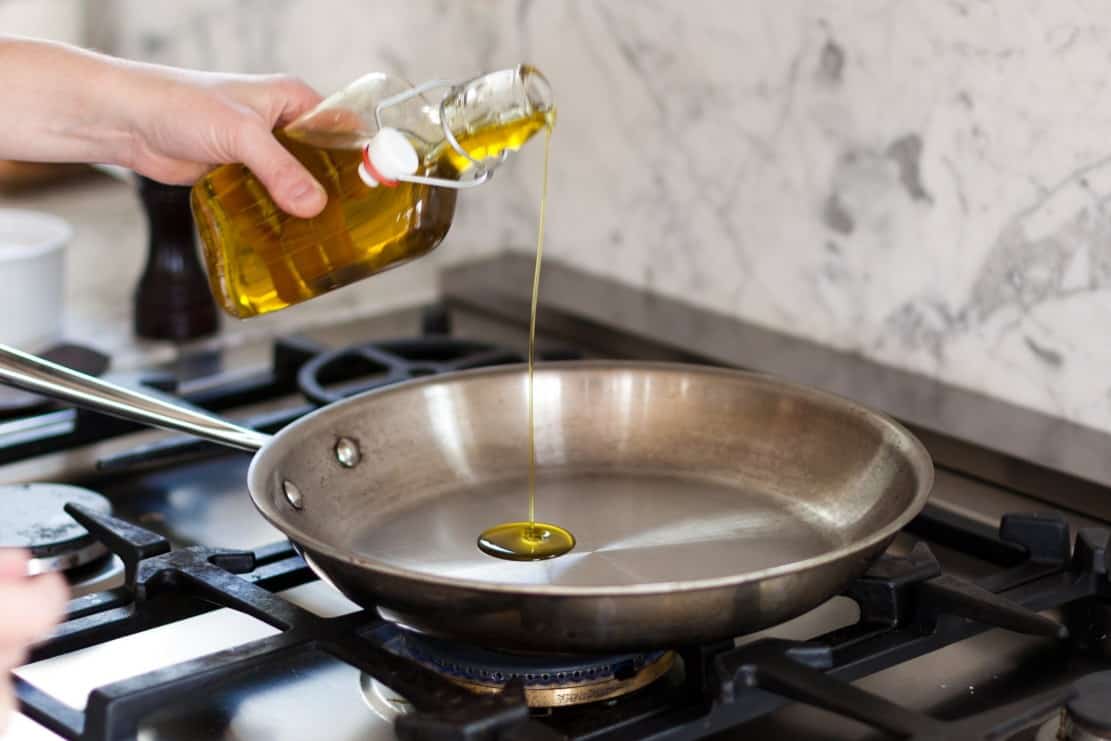
Another popular item in the list of commonly used pan materials is stainless steel. You can use this for different purposes such as braising, sauteing, searing, and mixing sauces. This is one of the pan materials that are sure to last long.
- Advantages
You will find a lot of advantages in using stainless steel. For one, it is durable with a pretty decent lifespan, especially when used properly as it is rust and scratch-resistant. Aside from stovetops, you can also use this in the oven or the broiler.
As stainless steel is non-reactive, you will have no problem with it affecting your food’s taste or color. You will enjoy cooking your favorite meals and dishes.
When it comes to washing, stainless steel is typically dishwasher safe so you just need to throw it in your dishwasher for some clearing.
- Disadvantages
Stainless steel is comparatively poor in heat distribution versus other pan materials. However, if you have extra bucks to spend, you can invest in higher-end stainless steel pans with aluminum or copper cores that have better quality.
Unlike non-stick pans, you will most likely encounter food sticking to your stainless steel plans unless you put so much grease. Both the grease and food residue can be a pain in scrubbing and cleaning your pans after cooking.
Check out these tips in making the most of your stainless steel pans:
Carbon steel
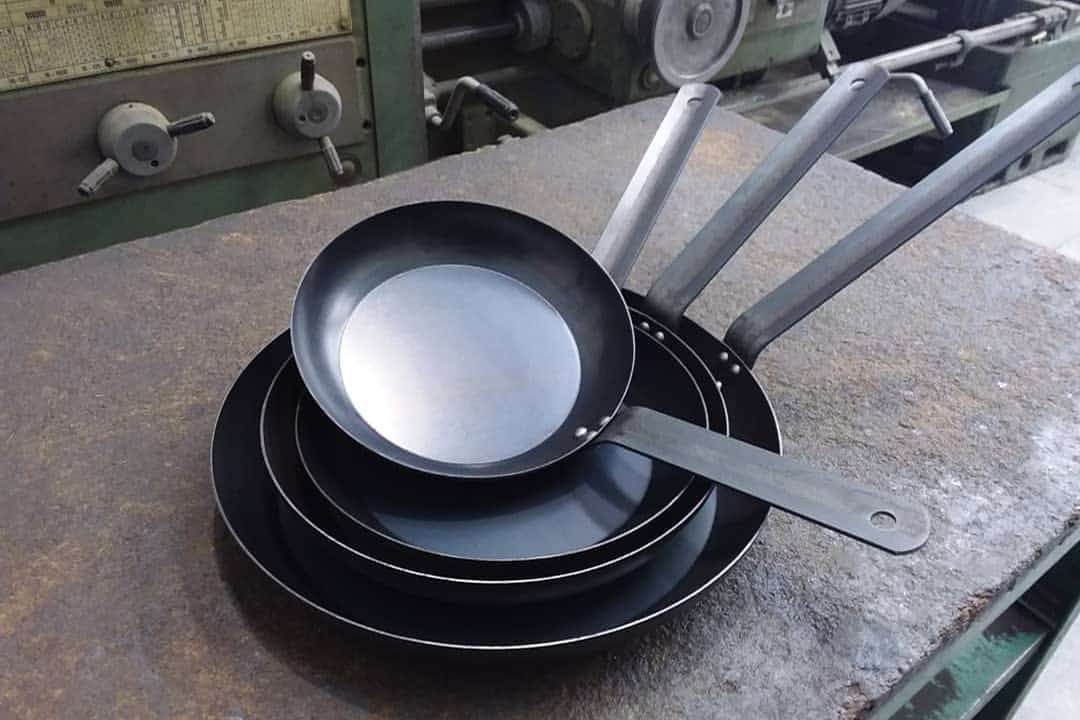
Much similar to cast iron, carbon steel is a combination of iron and carbon pan materials. Carbon steel pans are highly durable but are thinner and lighter than bulky cast irons. Many like to use carbon steel in their cooking adventures. For a deeper understanding of the comparison between these two, read our article: Carbon Steel Pan Vs Cast Iron Pan.
- Advantages
Cooking enthusiasts like carbon steel because it cooks food evenly with its good heat distribution. It is great for preparing meats and vegetables, often giving off a grilled taste. This pan material adjusts to temperature change well so it heats and cools easily.
Its advantage over cast iron is that it is lightweight. Some carbon steel pans also have a non-stick coating which makes them easy to clean and maintain. Take care of your carbon steel pan and you are sure to enjoy many cooking adventures with it.
- Disadvantages
Just like cast iron, some carbon steel pans need to be seasoned properly which will require effort and time. Avoid letting your carbon steel sit in water to avoid problems with its quality.
Aluminum
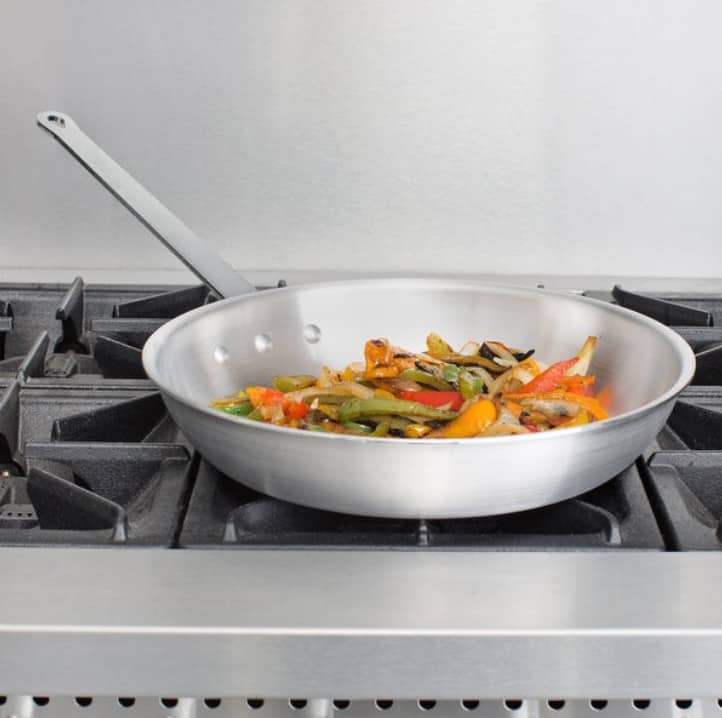
Aluminum is another pan material to consider with its own pros and cons. You can find two kinds of aluminum: regular aluminum and anodized aluminum. If asked which is better between the two, opt for the latter.
- Advantages
Buyers choose aluminum pans because they are affordable and lightweight. Anodized aluminum is sturdy, durable, and resists scratches. This is why there is no doubt why some prefer to have aluminum cookware.
- Disadvantages
The problem with aluminum pans is their acid reactivity. When you cook your acidic food using an aluminum pan, chances are, the taste might come out different than expected.
To add, aluminum is also prone to warping which is a common issue among frying pans. If you don’t want to encounter this problem, don’t use aluminum pans if you have a flat stove.
Copper
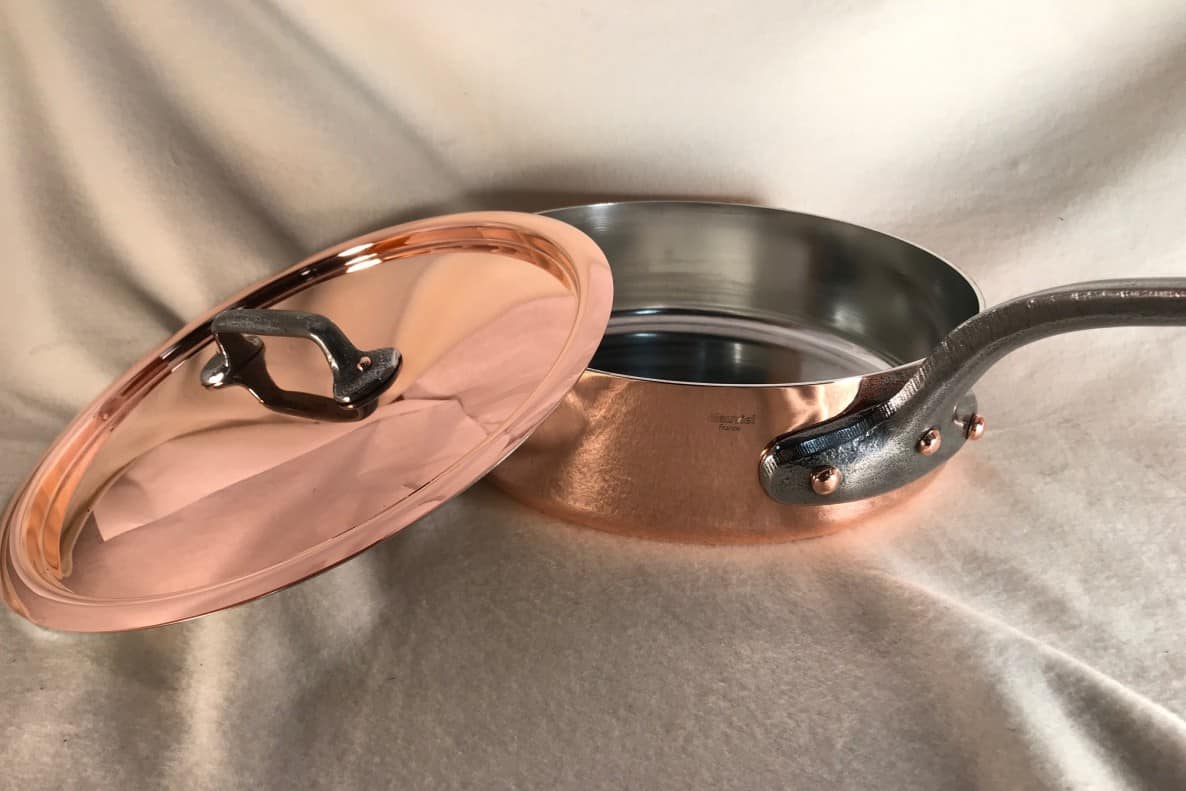
Ask someone who loves cooking and he will probably recommend copper pans. In fact, copper is often used in preparing French cuisine, However, copper pans may not exactly be for everyone.
- Advantages
The reason why many use copper is that it is good at distributing heat, thus, cooking food evenly.
In addition, copper heats up fast which helps lessen your cooking time. Likewise, it also cools down fast so you can easily control the heat when you are cooking.
- Disadvantages
Because of their good quality, copper pans are not cheap and you may have to spend more. Copper also has high acid reactivity so you have to practice caution when cooking acidic food to avoid a metallic flavor.
In terms of appearance, copper is prone to scratches and dents. You have to give it extra care if you want to keep your copper pans looking shiny and new.
Ceramic
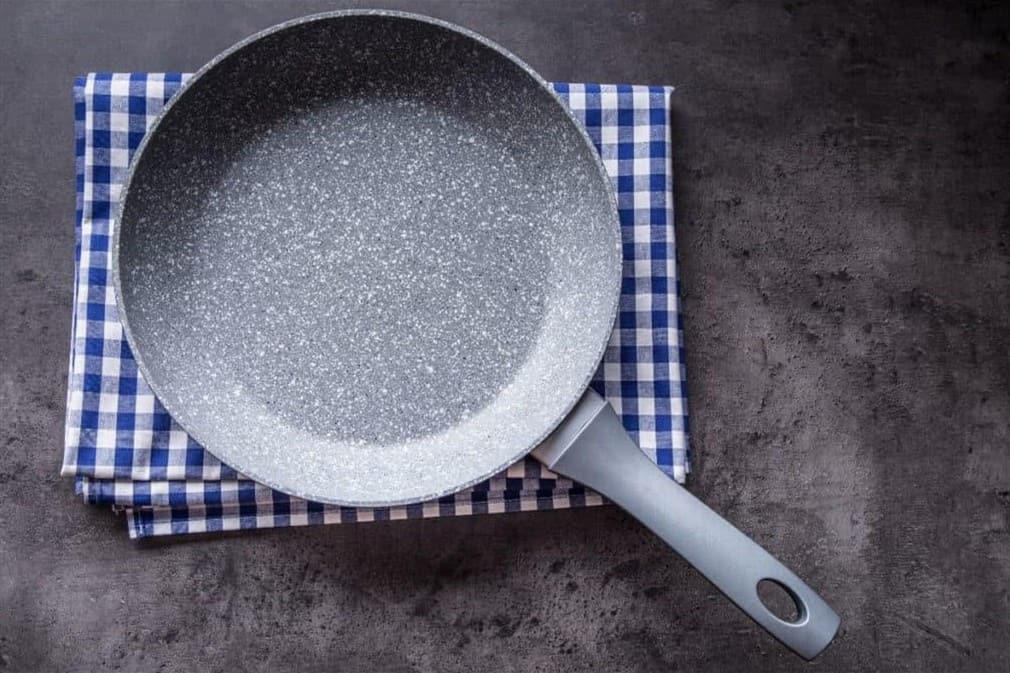
Want a safer and greener alternative to non-stick? Ceramic is your answer! Ceramic pans are perfect for food that requires slow cooking. It is great for other dishes too.
- Advantages
Ceramic has non-stick properties without the potentially harmful chemicals that can be found in some other non-stick pan materials. It is lightweight and you won’t have any trouble cleaning it.
- Disadvantages
You cannot use ceramic pans for cooking in high temperatures as it is not built for that. Just like non-stick pans, avoid using metal utensils when cooking with ceramic pans to avoid scratching the coating.
Though some are dishwasher-safe, it’s better to avoid doing so. You need to handwash your ceramic pan for it to last longer.
Watch these tips in cleaning your ceramic pans:
Glass
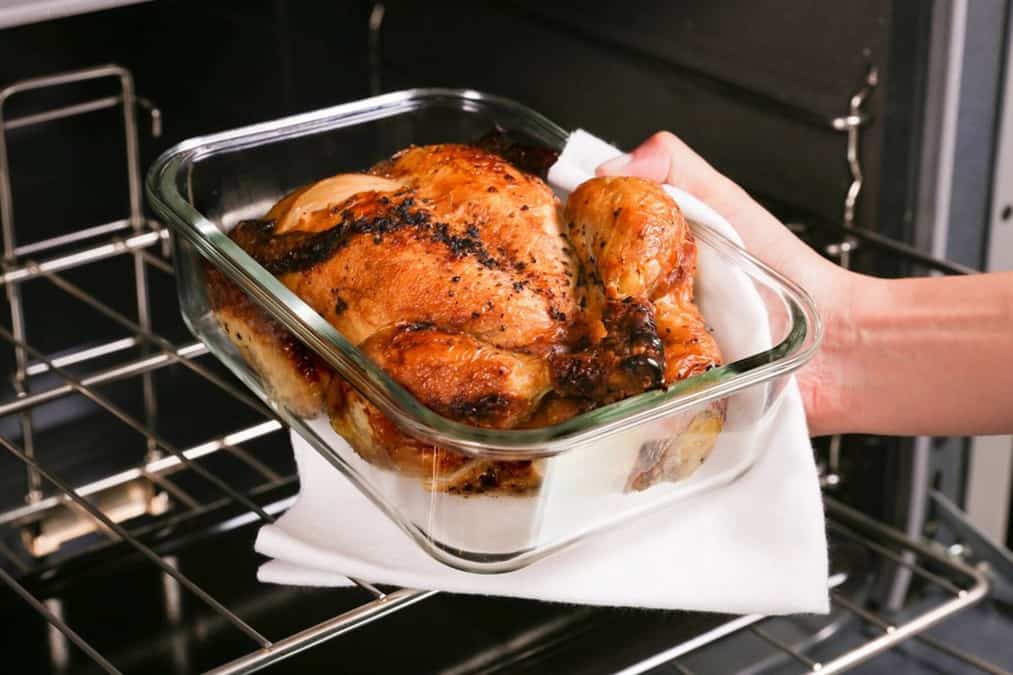
Not a usual sight when cooking, glass is a pan material often used for preparing casseroles in the oven. You won’t find many glass pots and pans in the market as the material is only good for the oven.
- Advantages
A unique thing about glass as a pan material is that you can watch your food as you cook it because it is see-through.
Glass is also pretty resilient and can withstand heat up to a certain temperature. It is also relatively easy to clean and you can just throw it in your dishwasher.
- Disadvantages
Though you can cook a good number of dishes with your glass pans, there is a limit to the methods of cooking. Most likely, you will use your glass pan in the oven rather than the stovetop.
Know your pan materials
If you love cooking, you must get to know the different pan materials and their advantages and disadvantages. No pan is the same and each has pros and cons. Your knowledge will help you determine what your preferences are and ultimately pick the one right for you and your cooking adventures.
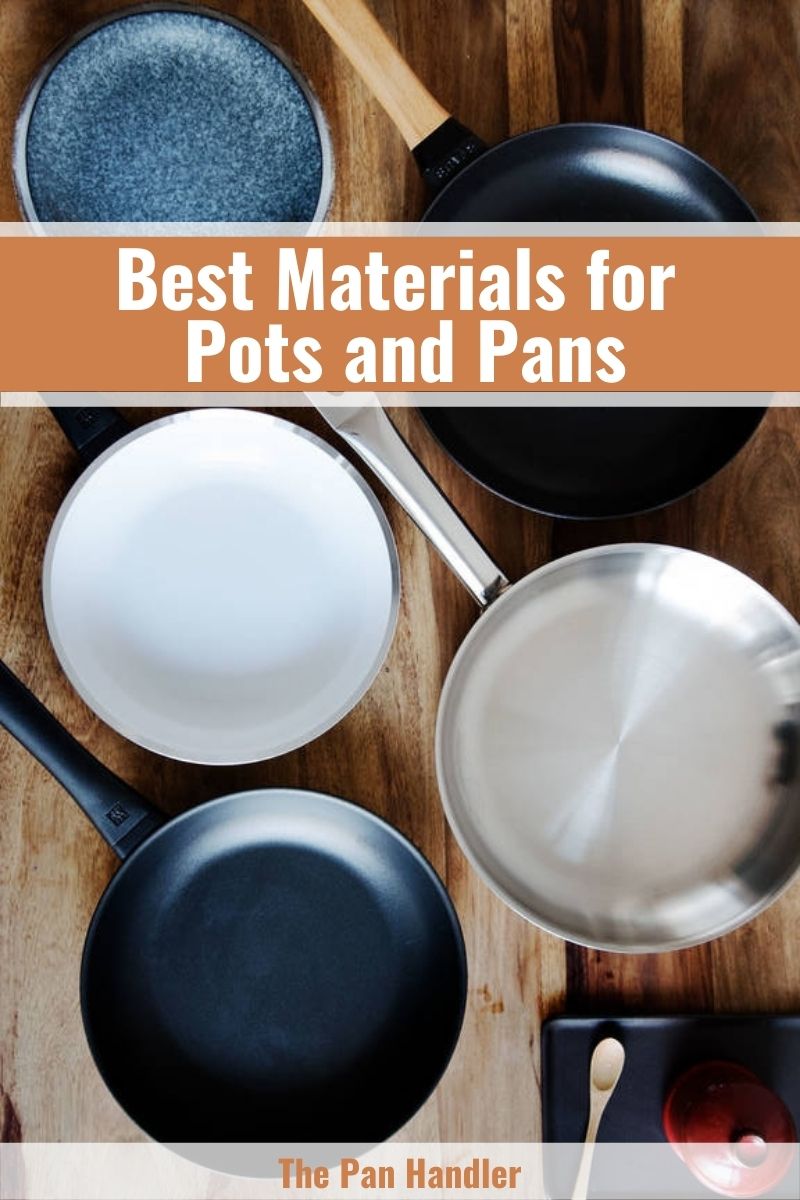

Michael Johnson is the founder of Pan Mastery, Inspired by his blacksmith grandfather’s legacy has a deep appreciation for hand-crafted pots and pans, he provides invaluable guides, reviews, and recipes to enhance your culinary journey.

